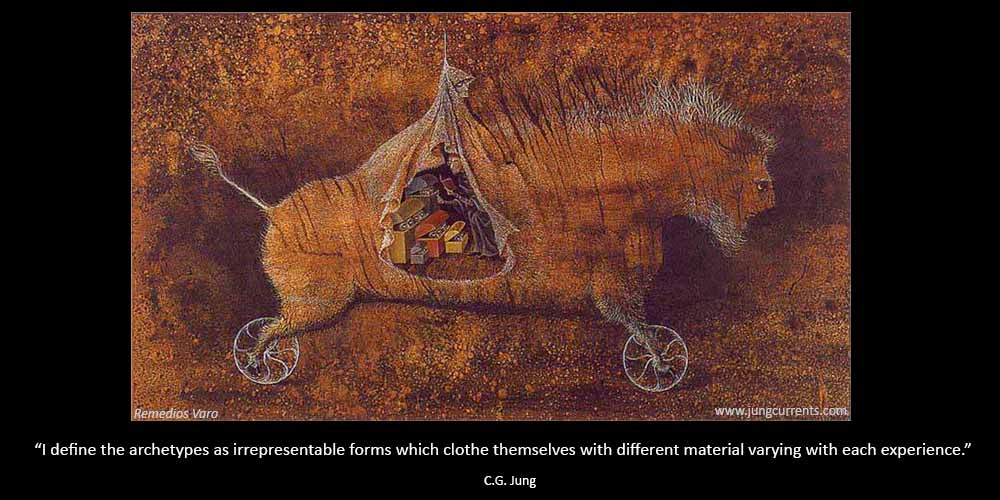Carl Jung, on Archetypes as Irrepresentable Forms

Letter to Gilles Quispel. 1950
To Gilles Quispel
Dear Dr. Quispel, 21 April 1950
Please forgive me for the long delay in answering your question.
I have so much to do and such an enormous correspondence that I often cannot catch up with it with my limited resources.
It can easily happen that a letter I would have most liked to answer is submerged for a long time in the flood of other, less important ones.
It is of course extremely difficult, in judging Gnostic images, to tell how much is genuine inner experience and how much is philosophical superstructure.
All the same the enumeration of the many Naassene symbols for the One in Hippolytus shows with reasonable certainty that in many instances they are genuine primordial images.
How far back the immediate experience behind these images lies, in other words, to what extent they are traditional, is another question.
That they may be spontaneous experiences we know from our experience with patients, where any knowledge of tradition must be definitely excluded.
Thus the pictures they occasionally draw are very often spontaneous recreations of images which have a religious and historical significance.
When Valentinus employs the word apokoktein for the separation of the shadow, he may well have been thinking of the mythological usage of this word, for the separation of the shadow signifies the cutting off of the chthonic side.
It does not seem exactly probable to me that when Christ cuts off his shadow this is an immediate visionary experience, but chiefly a philosophical idea very drastically expressed.
It is different with the image of the winged man.
This is very much older than Phaedrus (it occurs for instance in Babylonia).
Coming now to the egg, this egg or uterus is not restricted to the Greek sphere but occurs also in India as hiranyagarbha (golden seed).
Finally, the breaking of the vessels is a figure of speech which occurs practically everywhere.
It need not be a primordial experience at all.
I think very many symbols simply derive from language and linguistic metaphors.
On the other hand, I think it most unlikely that philosophy produces mythology.
Philosophy can produce allegory but not genuine mythology, since this is far older.
It does, however, have affinities with philosophy through its budding philosophical ideas.
These ideas are then worked out in philosophy.
Their mythological aspect would amount to their involution. But this never leads to mythology, only to allegory.
Philosophical interpretation and primordial image are always found side by side, as you quite rightly remark, for nothing promotes philosophical reflection as much as the experience of primordial images.
This is also the case with dreams: when an unconscious content emerges into consciousness, it can effect this transition only by clothing itself with the ideas existing in consciousness, thereby becoming perceptible.
As to how things look in the unconscious, that is beyond our ken.
Hence I define the archetypes as irrepresentable forms which clothe themselves with different material varying with each experience.
The archetypal character of certain traditional images can probably never be established as due to an immediate primordial experience.
One can conclude that the experience expresses an archetype only by demonstrating, through comparative research, that the same or very similar images occur in quite other cultures and also as verifiable primordial experiences in modern individuals.
The historical explanation of a symbol has therefore always to be sought first in its own cultural sphere, and then one must demonstrate the occurrence of the same or similar symbois in other cultural spheres in order to support the assertion that it is an archetype.
But this assertion becomes absolutely certain only when the image can be found in a modern dream, and moreover in an individual who has never had any contact with the corresponding traditions.
That, at any rate, is the procedure I follow.
Hoping I have answered your question, I remain,
Yours very sincerely,
C.G. Jung
Letters,
Volume 1
Page 553
